
Museum Rooms Little Room of Treasures
Photo - Museum Original - Temple of the Jaguar - Ek Balam Yucatec-Maya
"Expensive things interest me little if the value is merely in so many diamonds and pearls”
Quote Source - Peter Carl Fabergé
“In our boutique museum with have our little room of treasures, these are not necessarily the most valuable or the rarest, but the ones that either tell a unique story or ones we hold most dear - enjoy.” Why not “check out” some of the objects stories below.
The treasure room also holds some of our most quirky items - such as snow from the exact geographical North Pole (now liquid of course), a candle holder made from timbers of HMS Victory, an Ethiopian lip ring, an aboriginal penis gourd, a naval rum bottle cork - with hidden elicit ivory gambling dice, SAS officers mess cruet set, Mongolian Camel cheese and camel hair rope, glazed floor tile from the Houses of Parliament, weld slag and charcoal from Terror and Erebus beach in the High Arctic. Antartica “leopard seal attack” damaged propeller, the union flag from Port Lockroy - purchased for the price of 22 albatross’s and much more.
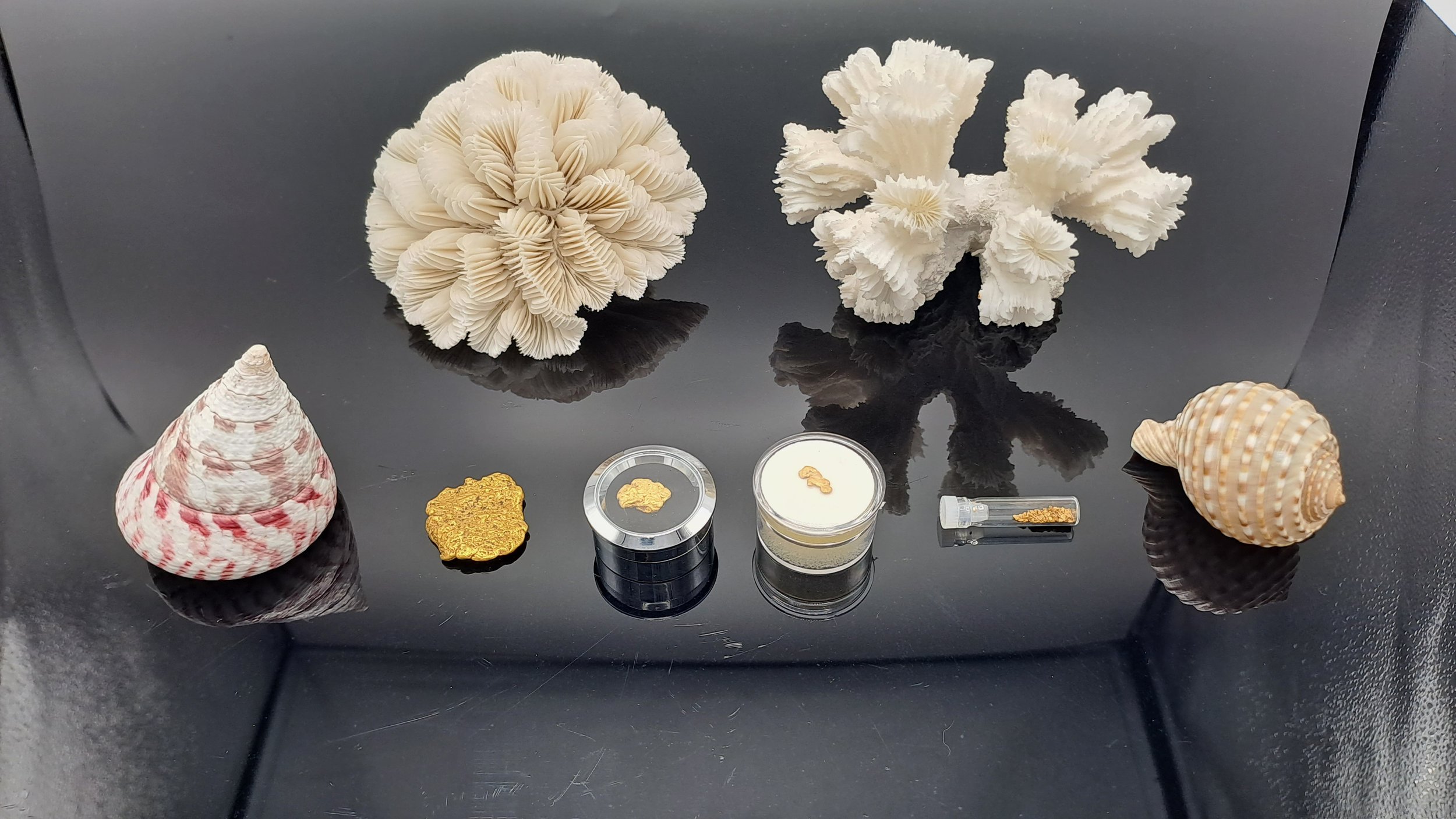
Nevis Valley and Alluvial Gold, small nuggets and panned gold

Black Pearl(s) - New Zealand, Vietnam River Pearl, Fire Coral, Mother of Pearl ~ Disc neckless Fiji along with shells, Corals Seychelles, black Bladderwack UK
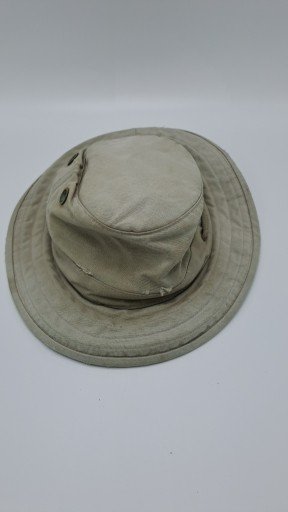
Tilley Hat 1990's been around the globe 150 plus destinations and every continent.
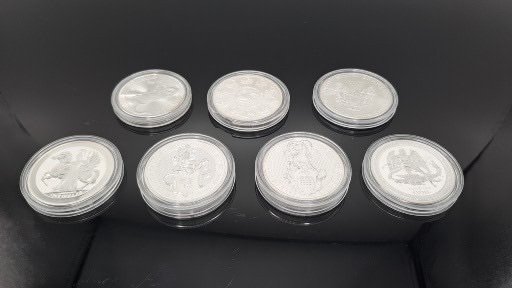
Silver "bullion" coins 1 Oz Left to right -top row Bottom Row -1 Angel Isle of Man - Queens beasts
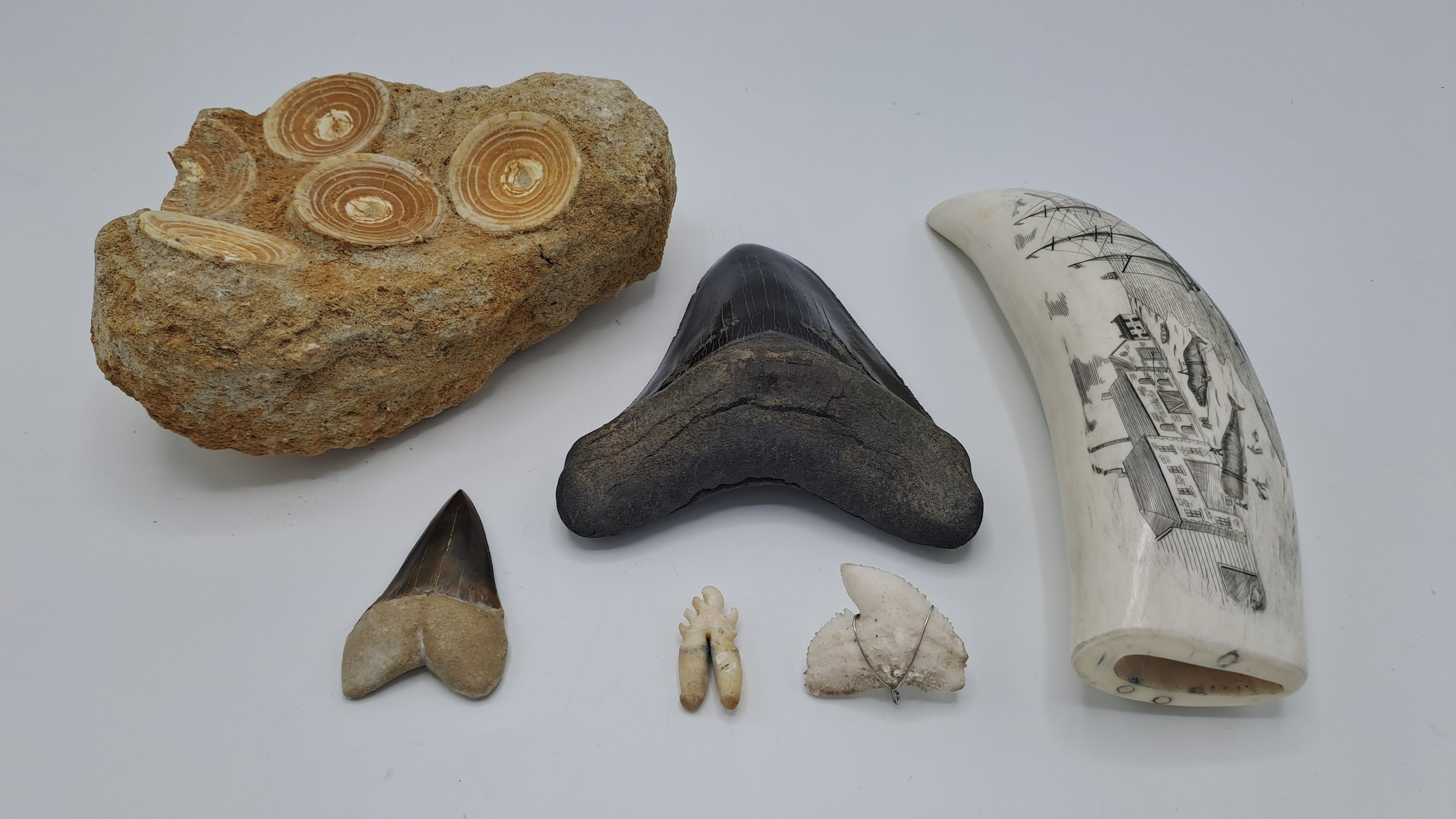
Various fossils and teeth. Top left shark spine, Magladon tooth (top centre) Sperm Whale Tooth (right) and left of that Tiger Shark, Crab Eater straining tooth and bottom left Great White Shark.
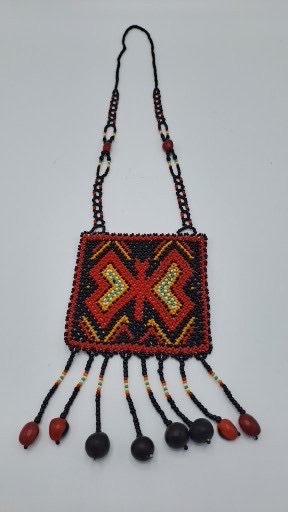
Bead and Shell Necklass work (reproduction) Larco Musuem (Peru)
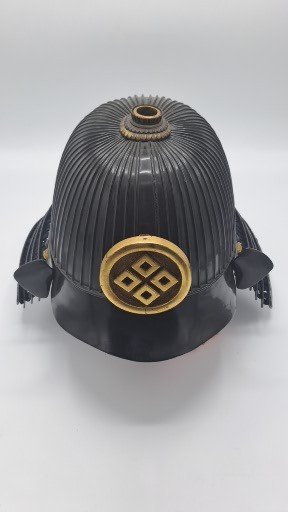
Hakkoryu Meyui Mon (crest).The Maedate is Yotsume which means four eyes. “Four eyes” guard against evil, and can see all comers.
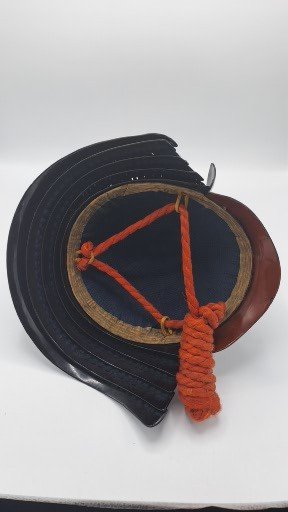
Tetsu Kurourushinuri 62 plates Suji Kabuto, (Samurai helmet) The makers signature may be under the cloth lining. The more plates the higher the quality and ranking of the Samurai who wore it. The would have belonged to a high ranking samurai of the Minamoto clan. Blue cloth lining and iron helmet.

Tetsu Kurourushinuri Itamono shows 4 plates, Neck Guard and it has smaller Fukikaeshi, small wing like projections either side of the brim.
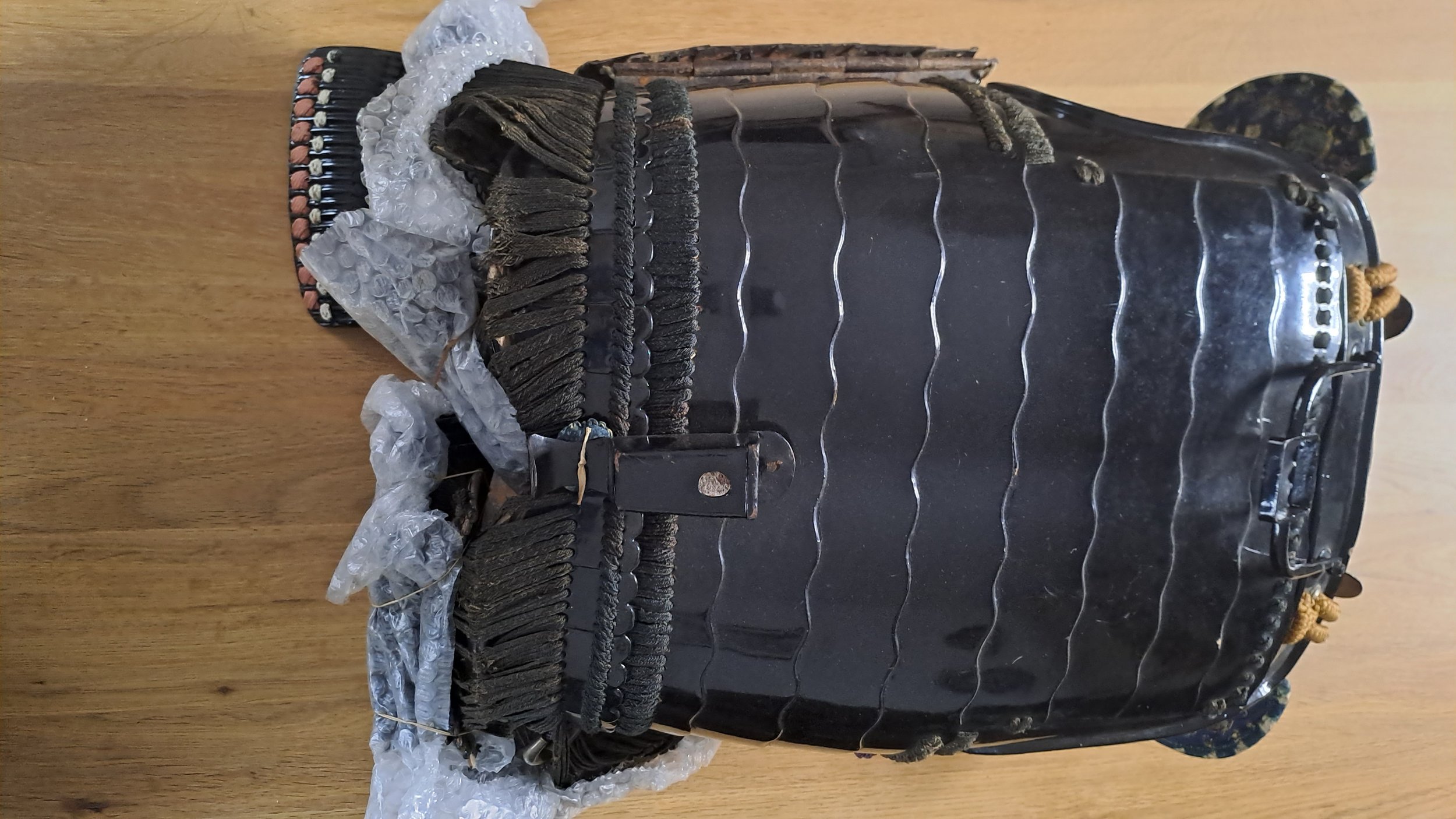
Edo period - hinged "dō" or chest armour cast iron and black lacquer - protective skirts are bubble wrapped - awaiting restoration - tape and iron panels. This item has a special attachment for a battle flag or Sashimono which were small banners carried by foot as well as mounted troops.

Another view of the armour clearly showing the flag carrying device top and bottom.
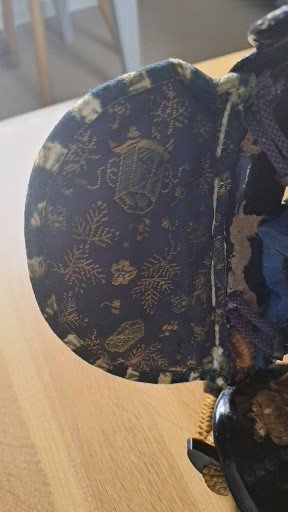
Silk lined in beatifull gold thread work.
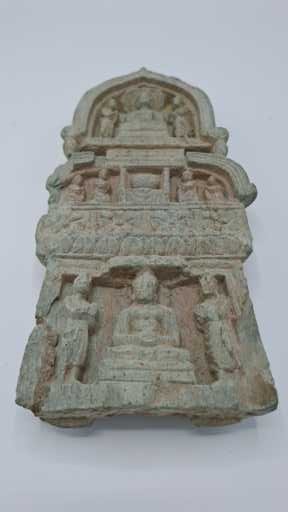
3rd or 4th century (early) buddist schist or stome carving with lotus flowers, buddah and followers. repaired in antiquity. (Tibet / China)

Tea chest - tea was once a very valuable commodity this 19th century Afgan chest is finely carved. (Afghanistan)
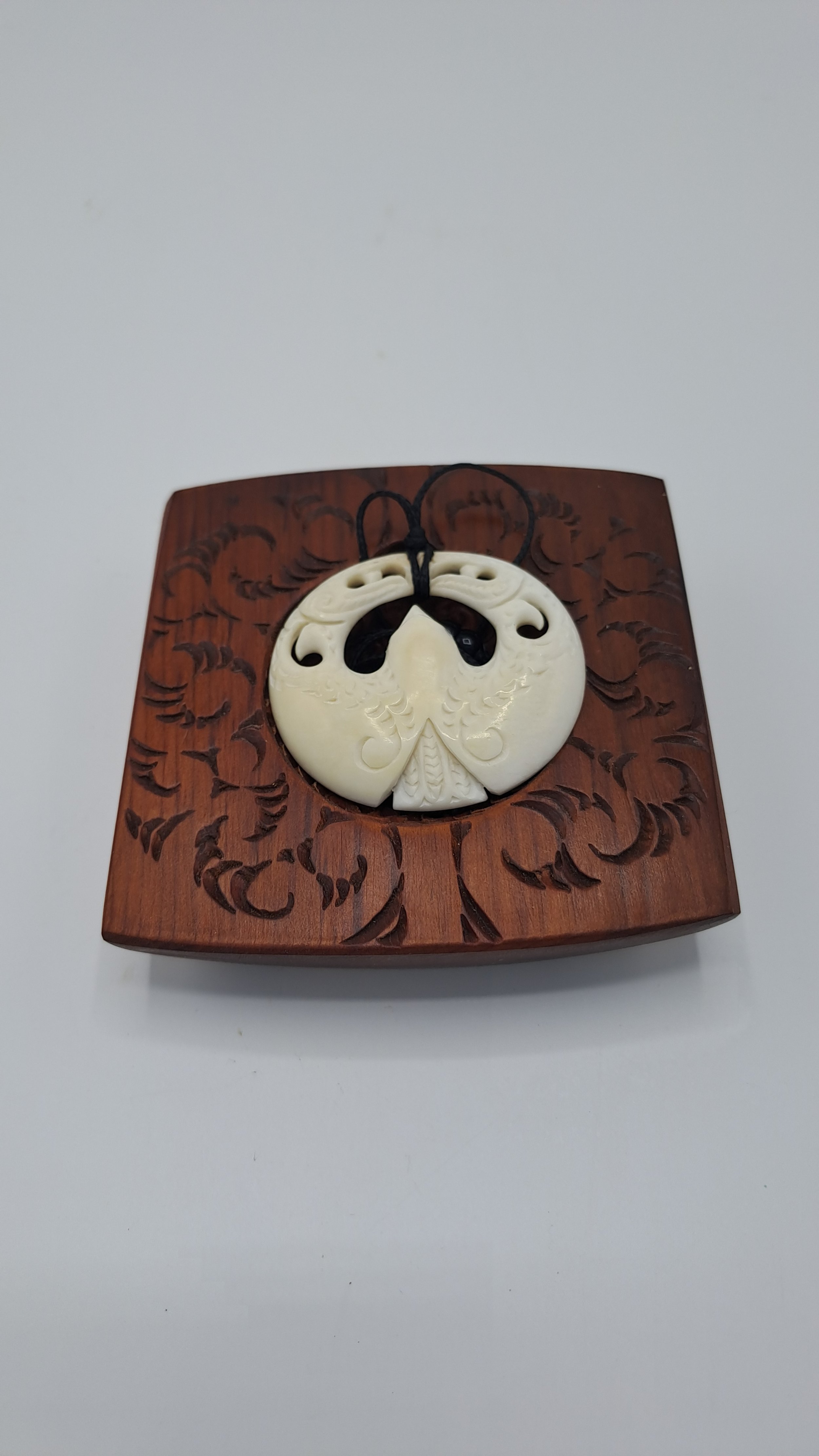
Bone carved Kea (a mountain parrot) pendant and half box. Known Māori artist (New Zealand South Island)
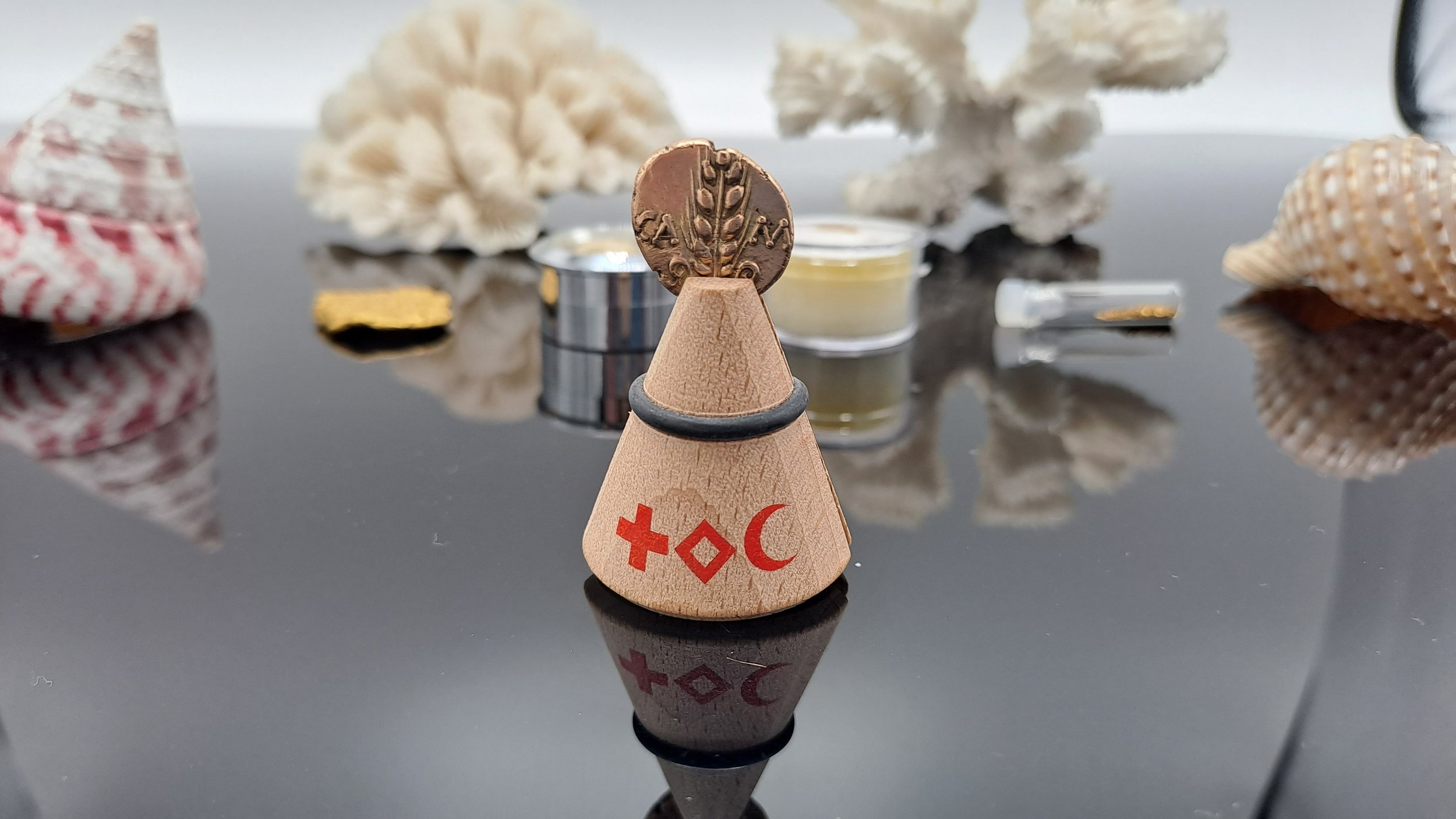
This coin (a gold stater) from Cunobeline (Strong Dog) of the Catuvellauni tribe AD 9 - 40 sums up why the romans invaded us, grain, horses, hides, dogs and of course gold. Cuno fought and defeated both Julius Caesar and farcically Callaguali. The empire eventually fell after his death and his sons (Caratacus) defeat to Roman emperor Claudius under the command of Aulus Plautius.
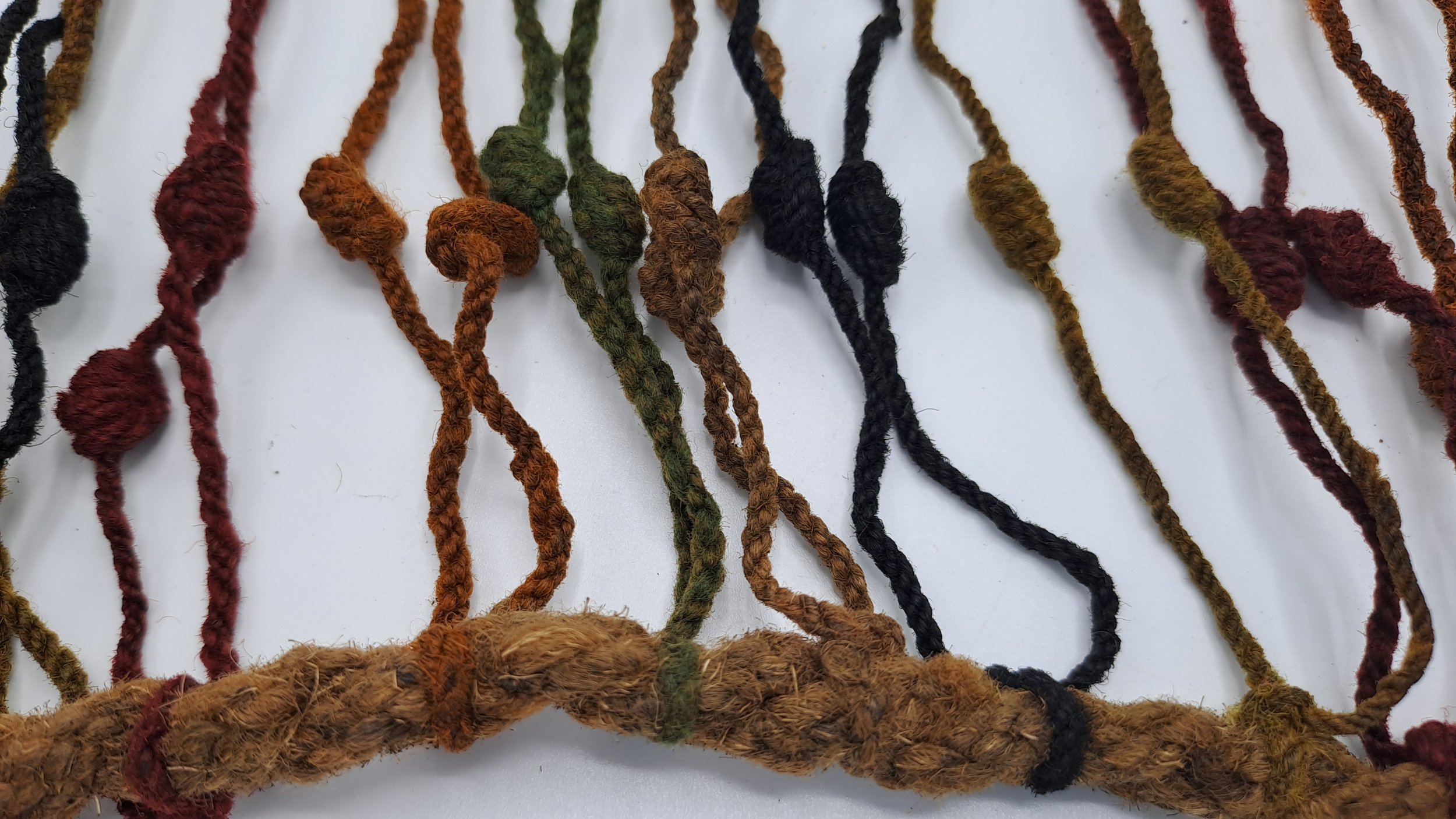
Quipus were a string counting system used by the Incas to record information. The knotted cords were used to record information. The colors, knots and the distances between the knots enabled those who used the quipus to identify the type of object or the characteristics of the items being recorded, such as people, births, Lamas etc. This is a good reproduction (Southern Peru)
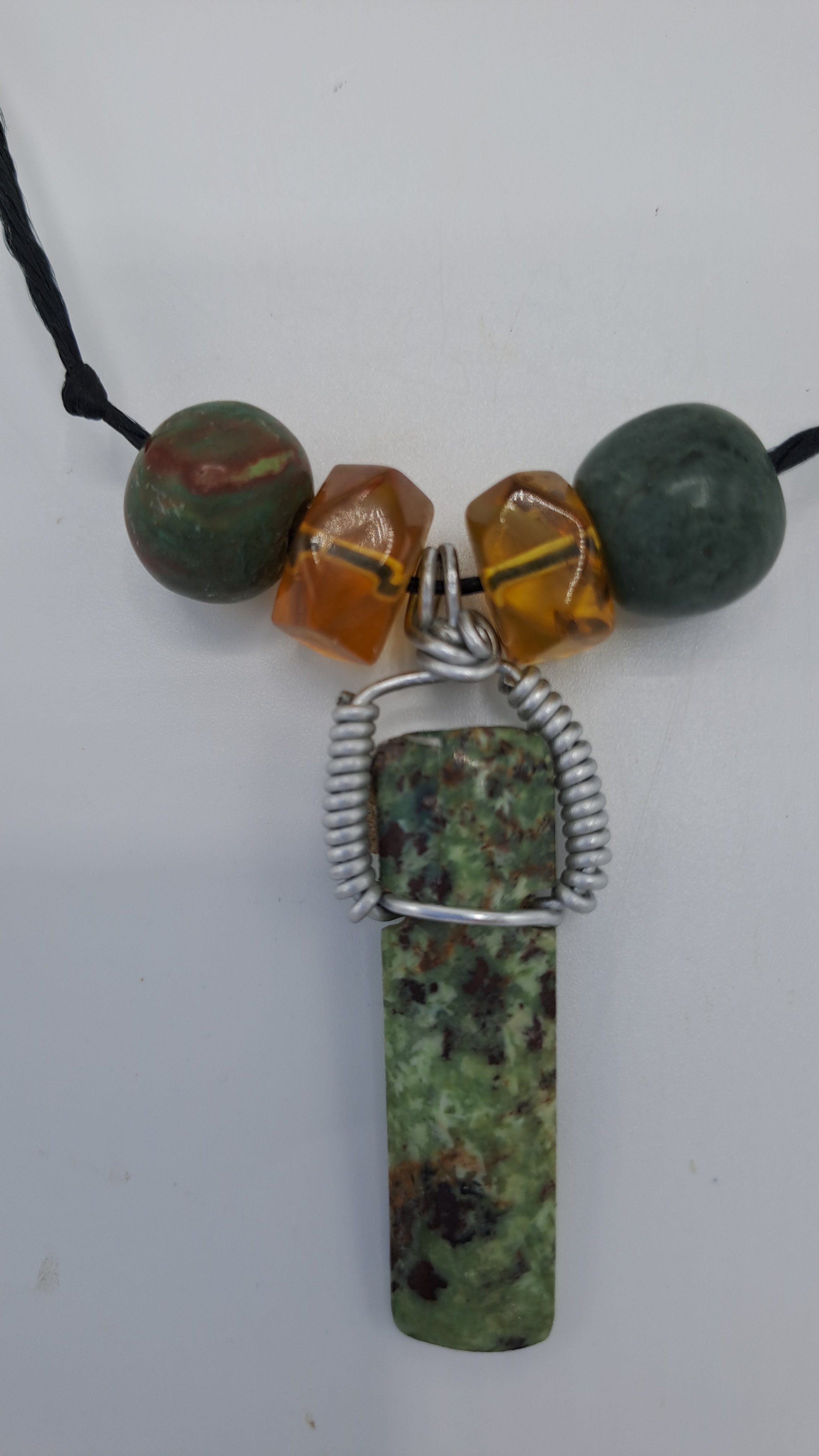
Mayan necklass made from items from indigenous peoples own land. Given to us for free.
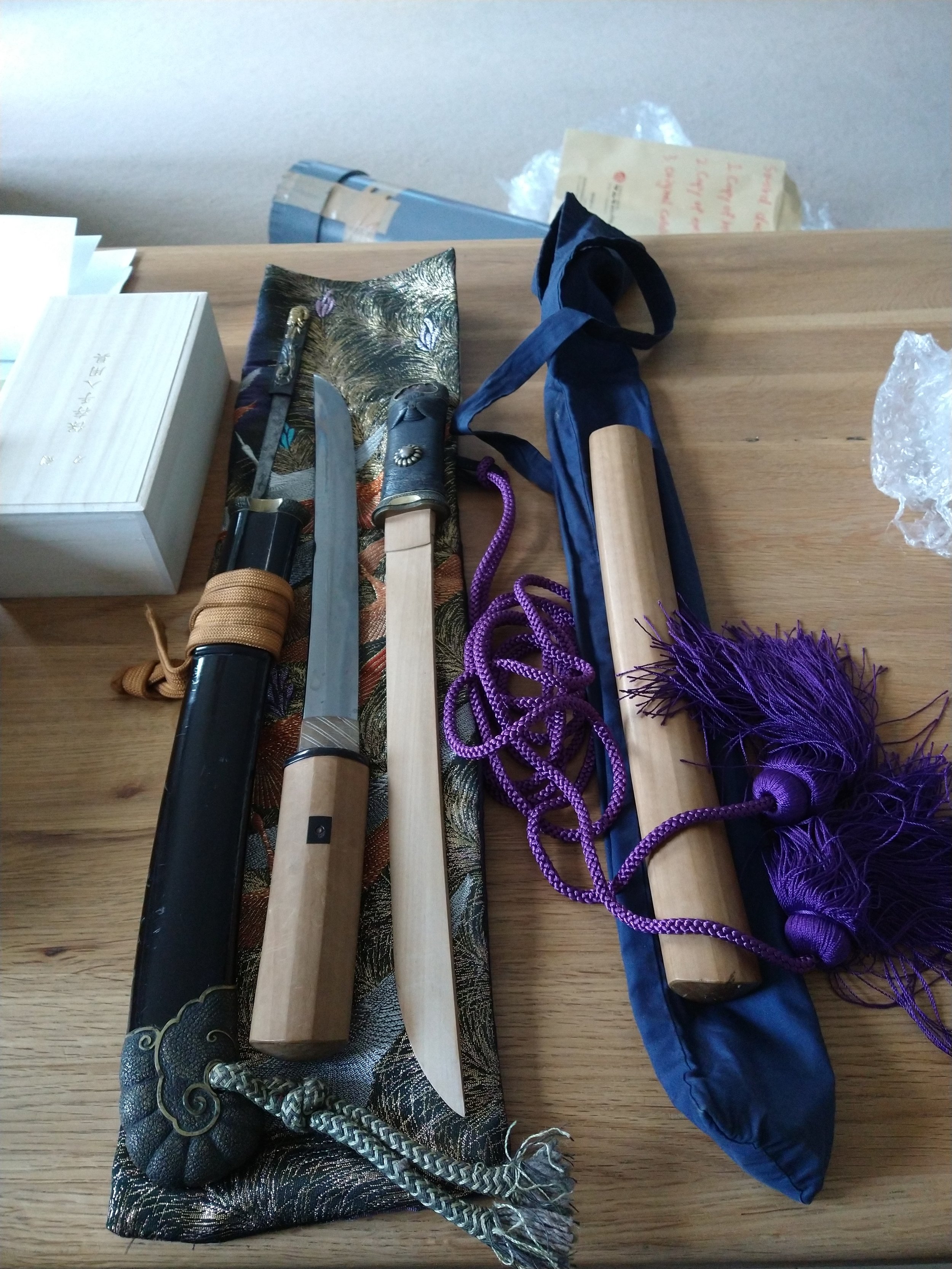
Tanto set made by Kanetsune. Wooden storage and orginal Koshirae (scabbard) Tensho era (天正) Azuchi Momoyama period of Japanese history c (1573-1593 A.D).
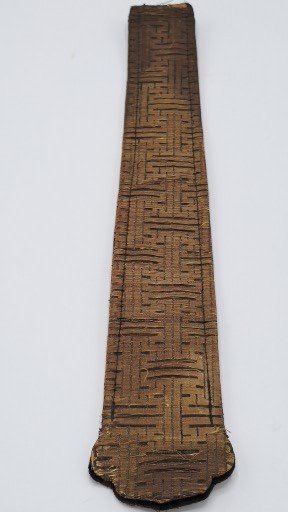
Silk and gold thread pipe case 1780's.

Some of our collection of Sami artefacts from Russia, Norway, Sweden and Polar Inuit from Greenland and Canada - Dog Booties, minature lapland boots, birch bark box, silver wire bracelets, lapland knive, shaman drum

DR Congo - LEGA - Idimu - Bwami society - rare heart shaped mask with "coffee bean" eyes. fertility rituals. Not always worn on the face! (DR Congo)

In the Footsteps of Franklin Expedition - Illustrated Chart - Greenland & Nunavut 2015 expedition. lots of Polar Bears and a white morf Gyr Falcon. Other notables were a hooded seal. (Canadian High Arctic)
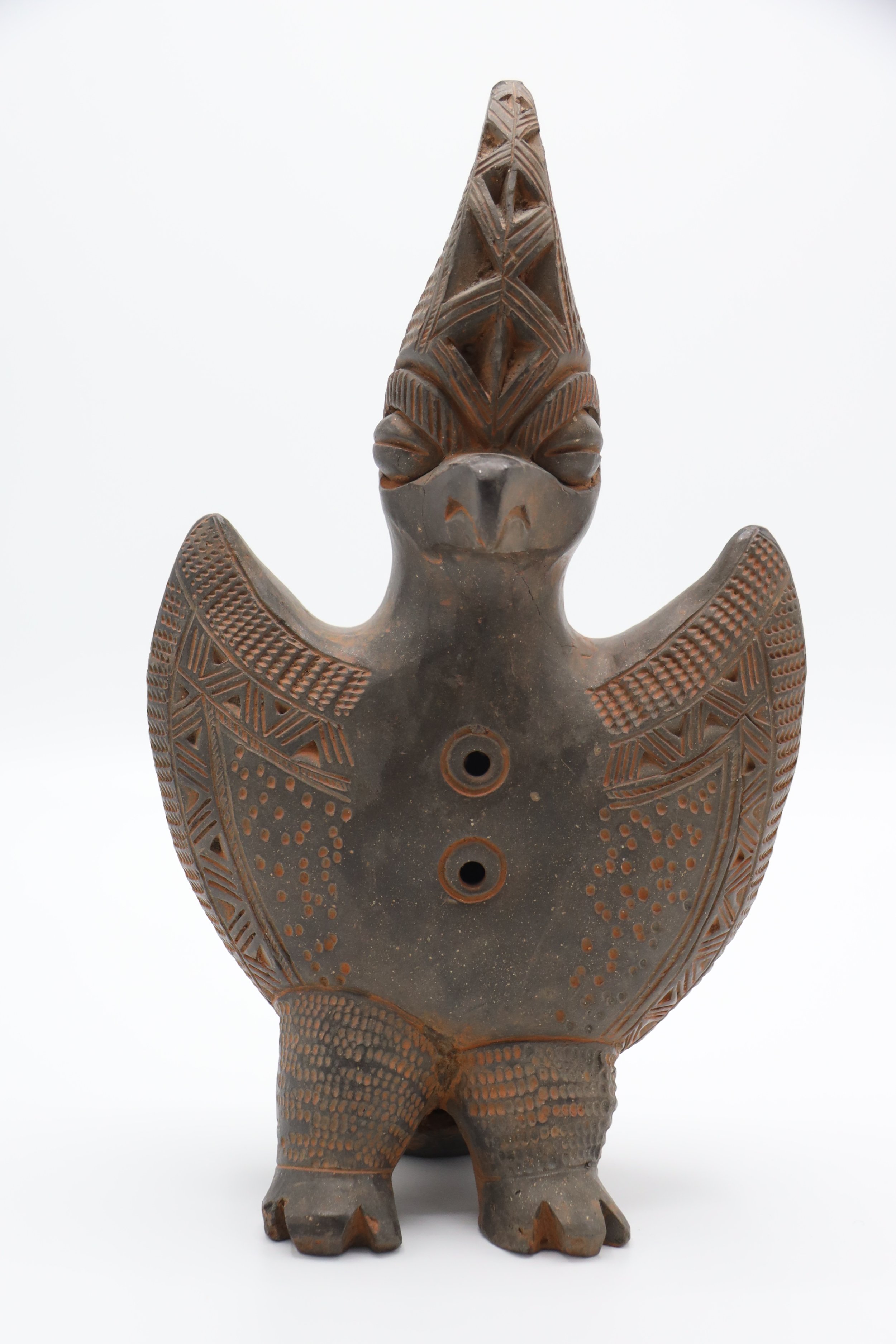
Phoenix or giver of life - gold bearing clay, you can see it glitter - This can be played as a musical instrument. It is one of our favourites (Venezuala).
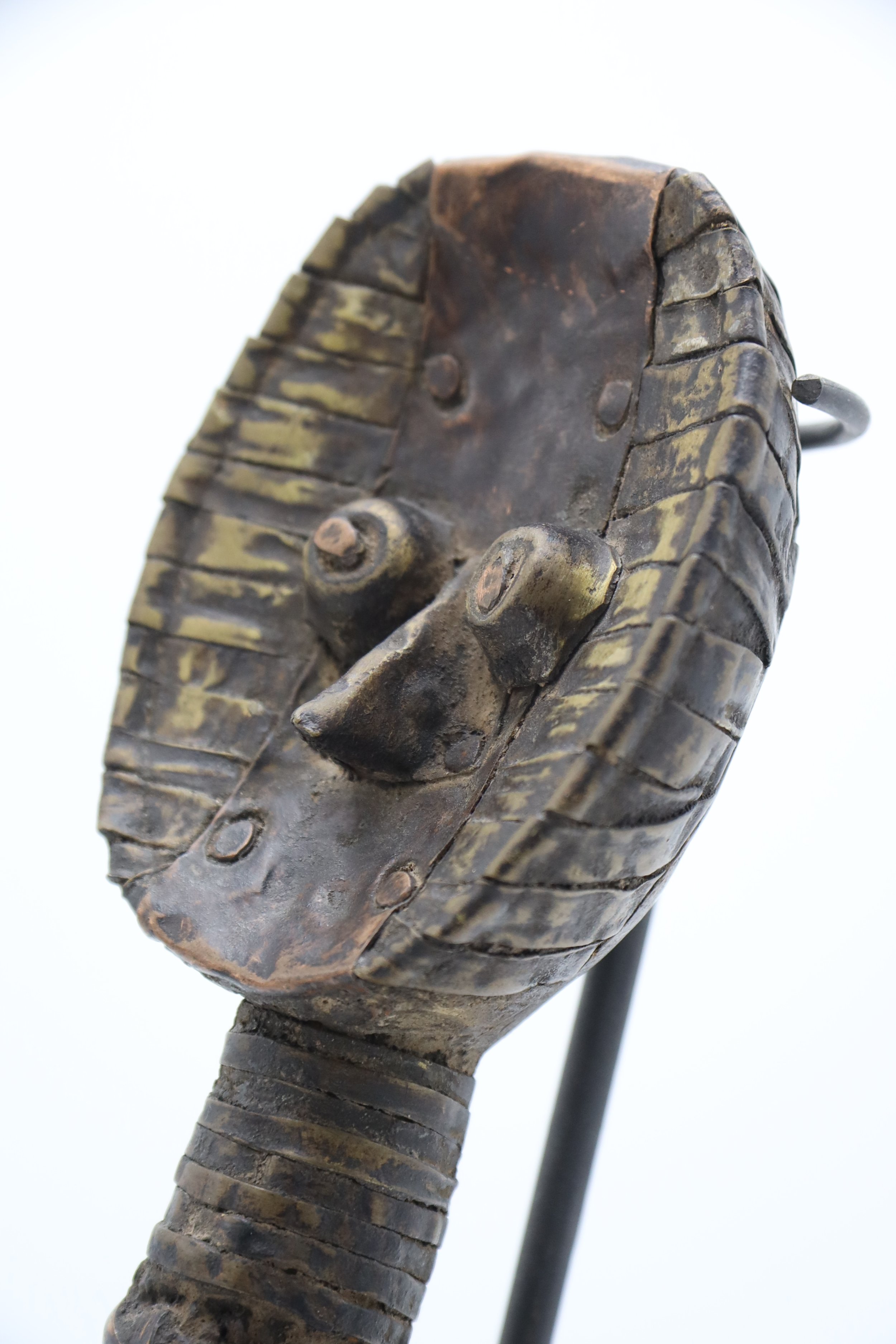
Kota-Obama 'Mbulu ngulu' Reliquary Guardian Brass and wicker "witches rattle" (Gabon)

The Travel Museum symbol - Tumbaga Gold - Chimu Peoples - Peru.
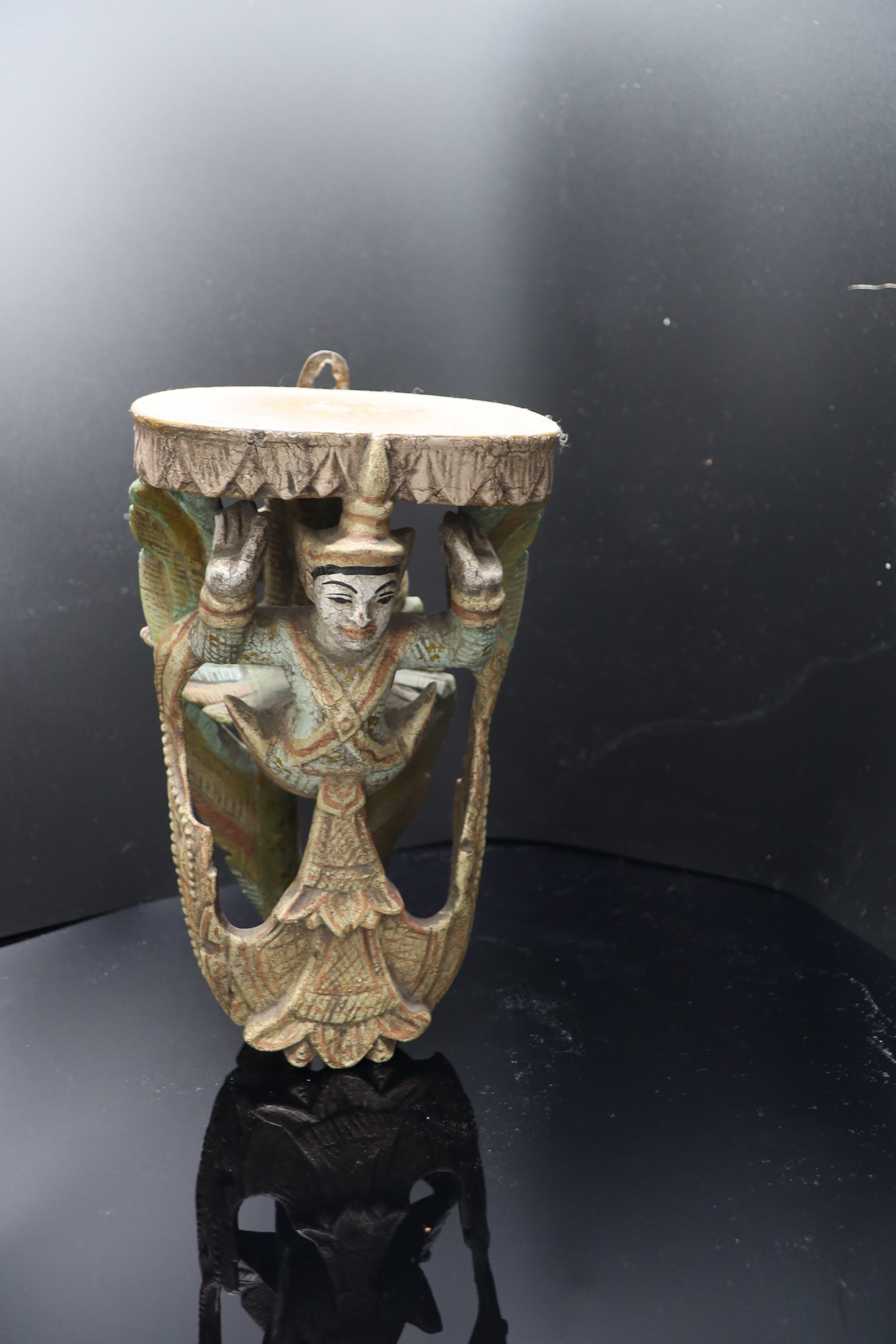
A flying angel - Guardian - Goddess or God? - candle sconce - we lost the ticket - can you identify me? Acquired in Indonesia. (Bali)

Ice Camp Barneo - North Pole illustrated chart (North Pole - illustration from Argentina)

And its off - The North Pole Marathon - Ice Camp Barneo 2017 edition. We set off well, but soon became apparent all not well with the ribs.

Official Herbert Ponting photograph - Scott Nimrod Expedition, we have another ponting of scott celebrating his last birthday in the huts.
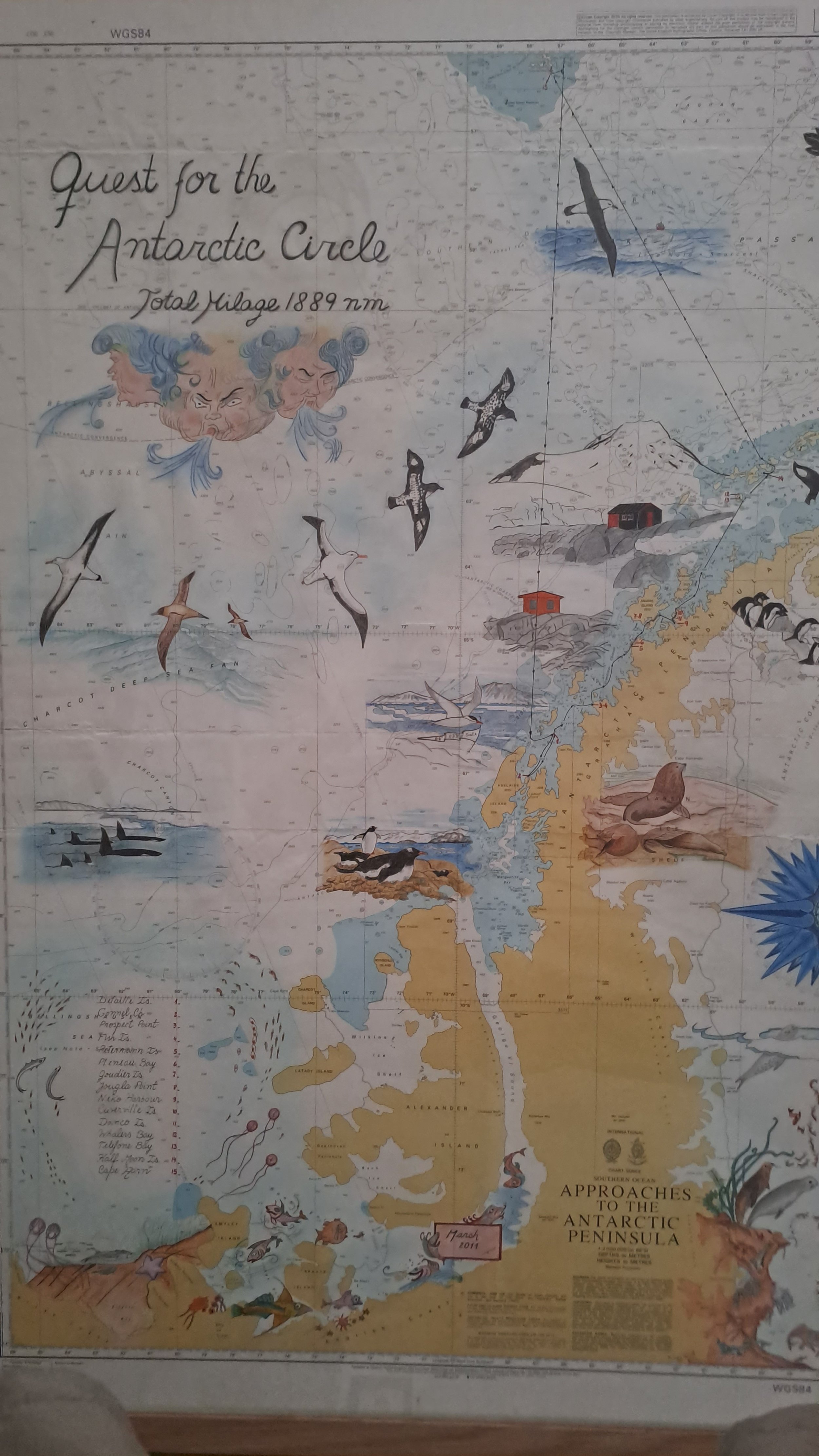
Antarctic Peninsula illustrated Chart - South of 66 - Maria Ines Etchigova. This was our first illustrated chart. It is wonderful. Actual ships chart from MS expedition. (Antartica)
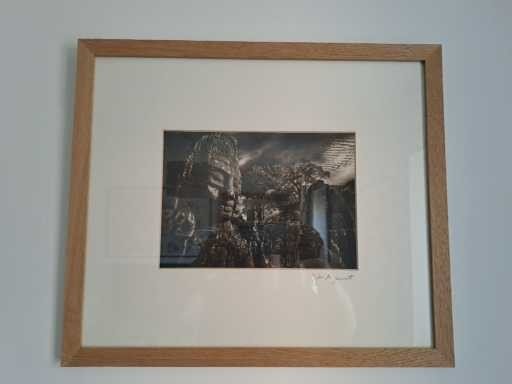
Cambodia - Original photo by renowned photographer John McDermott, we have 2 in the collection. Outstanding photographer. (Cambodia)
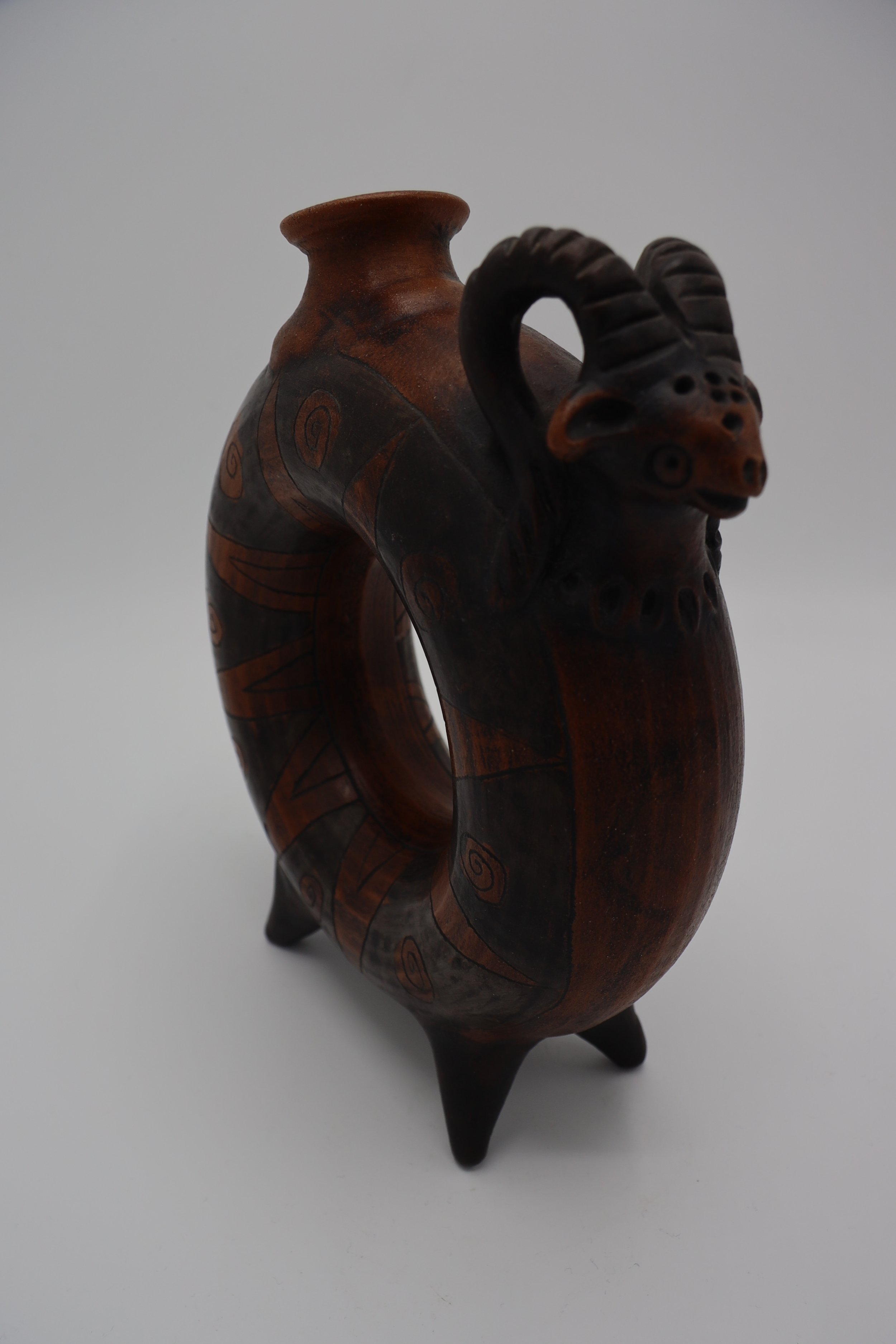
Reproduction Armenian wine jug - Real one in the Armenian National Musuem has a broken foot. The treasure room is a real treasure! (Armedia)
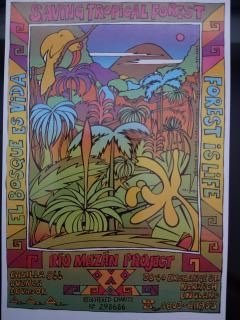
Rio Mazan Expedition 1987 - El Bosque es Vida The Forest is Life. It is now a biosphere - conservation in action. (Norwich England)
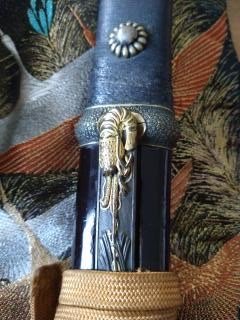
c 16th c Tanto - Under the armour dagger (some were armour piercing). Shrimp handled Kogatana (Utility Knife) sits in the ~Saya lacquered wooden scabbard. .(Japan)
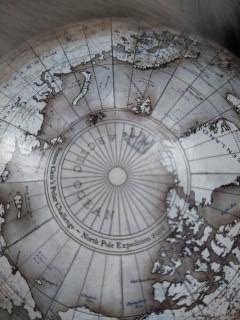
Bellerby globe close up - hand made made for our 100th TCC Country. Custom features also shows the ice extent - wonder what this will look like in 50 years time? (England)
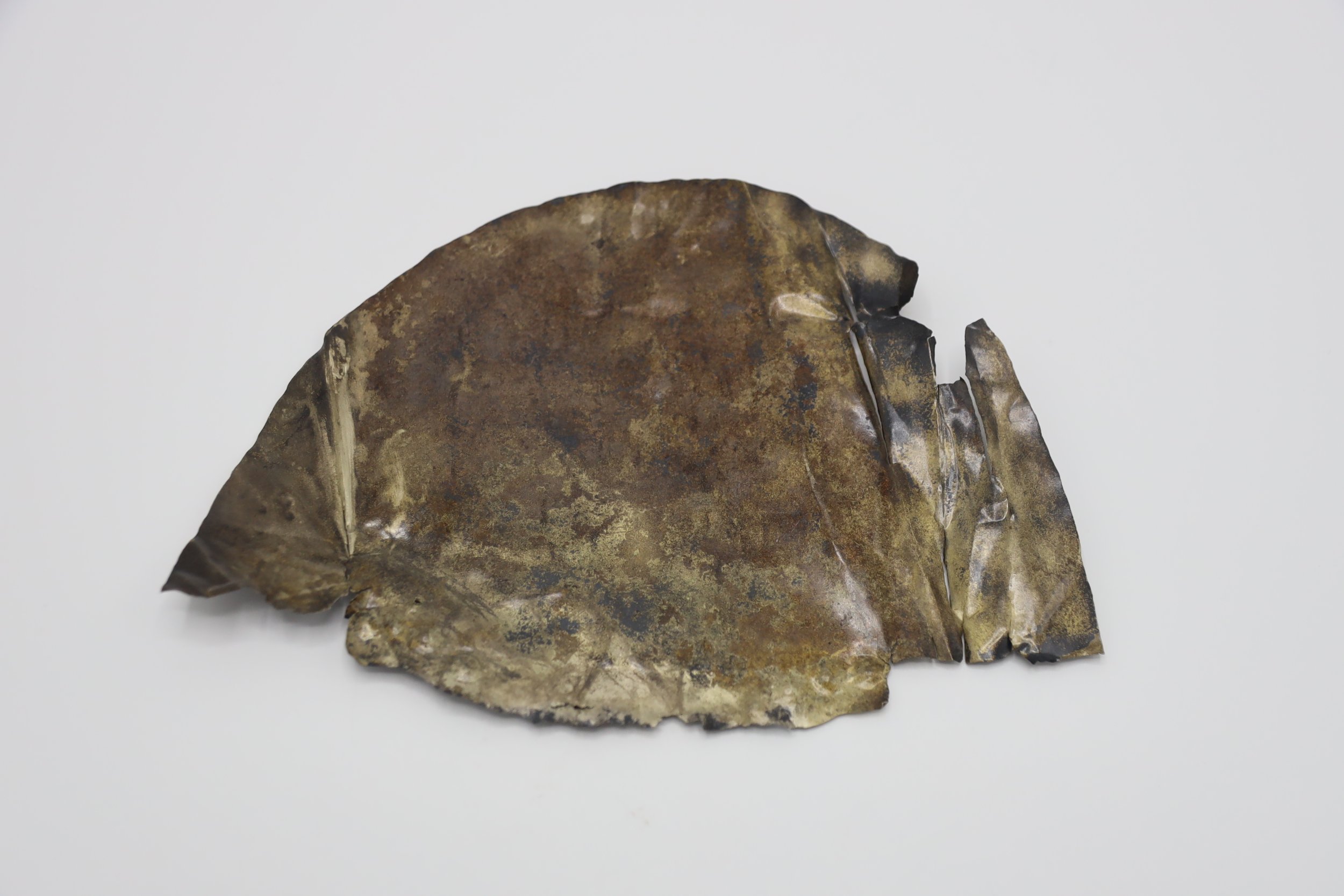
Tumbaga Gold Chimu Head Piece or Mouth guard - Warlord or High Priest? The conquestadors were dissapointed with the gold haul - it is paper thin - so not much weight. (North Peru)
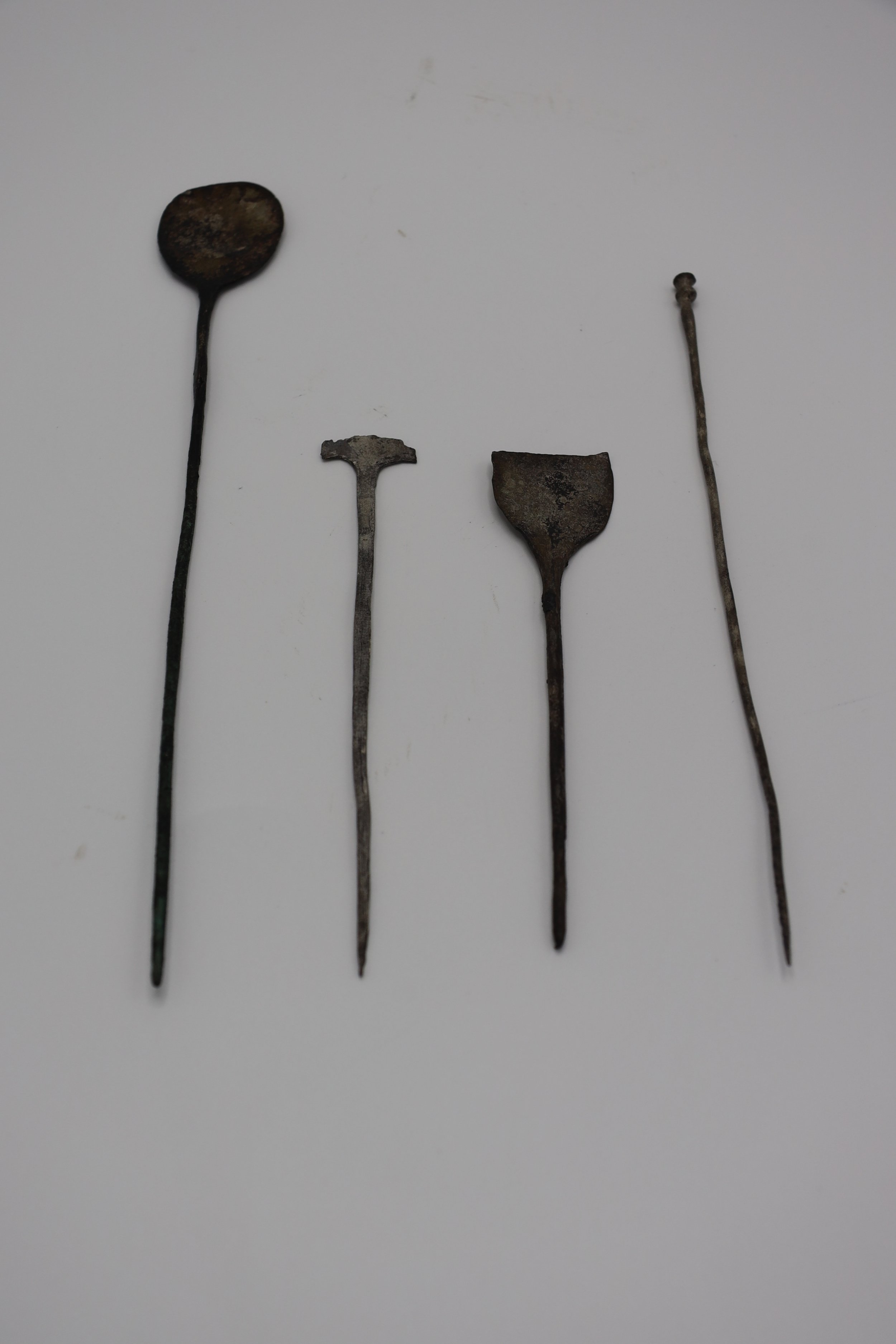
Silver Ritual Spoon and Hair Pins - Northern Peru
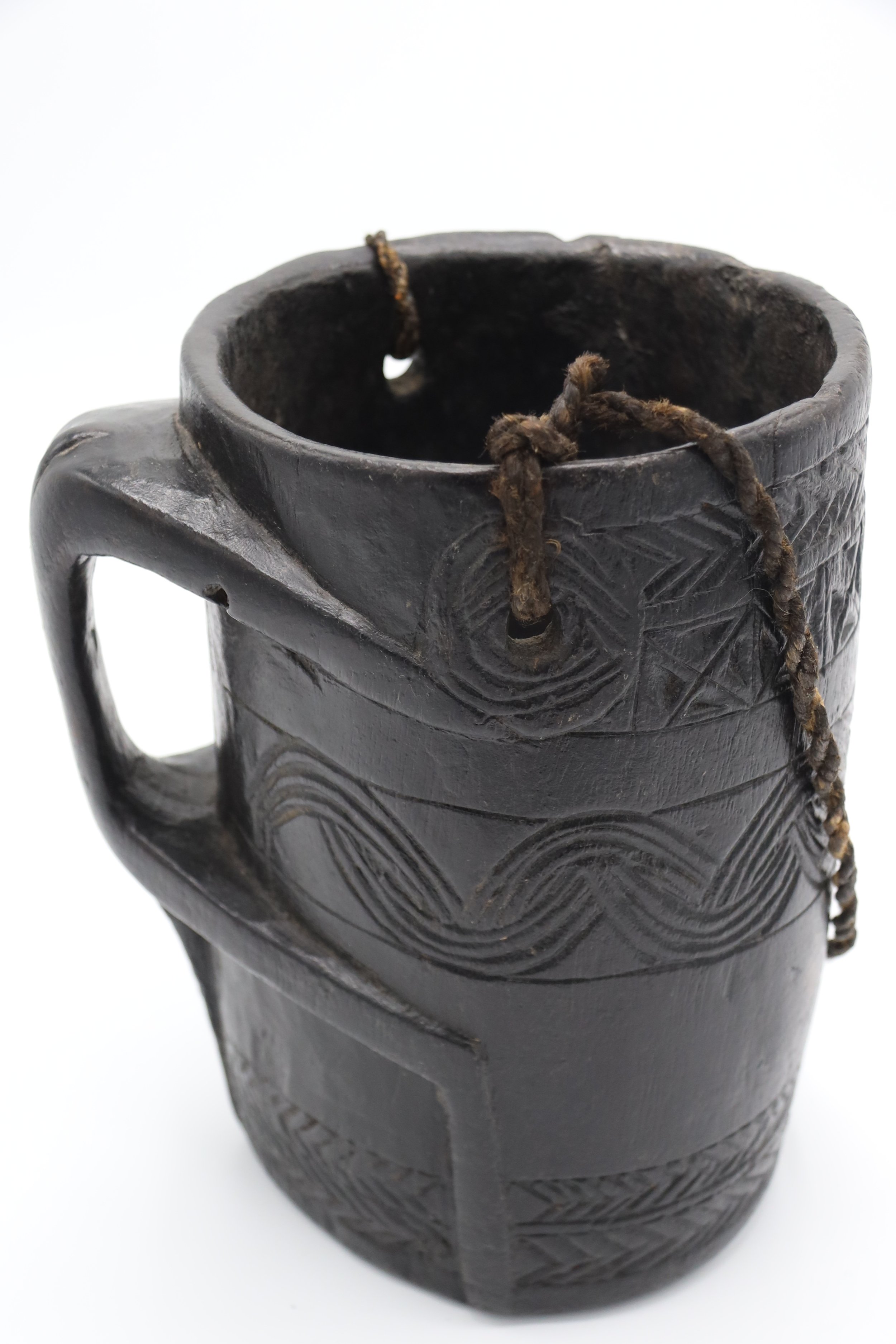
Tibet Monkey Handle Beer Jug - hardwood. Probably more likely use was Yaks milk, but they often get called beer jugs. (Tibet)
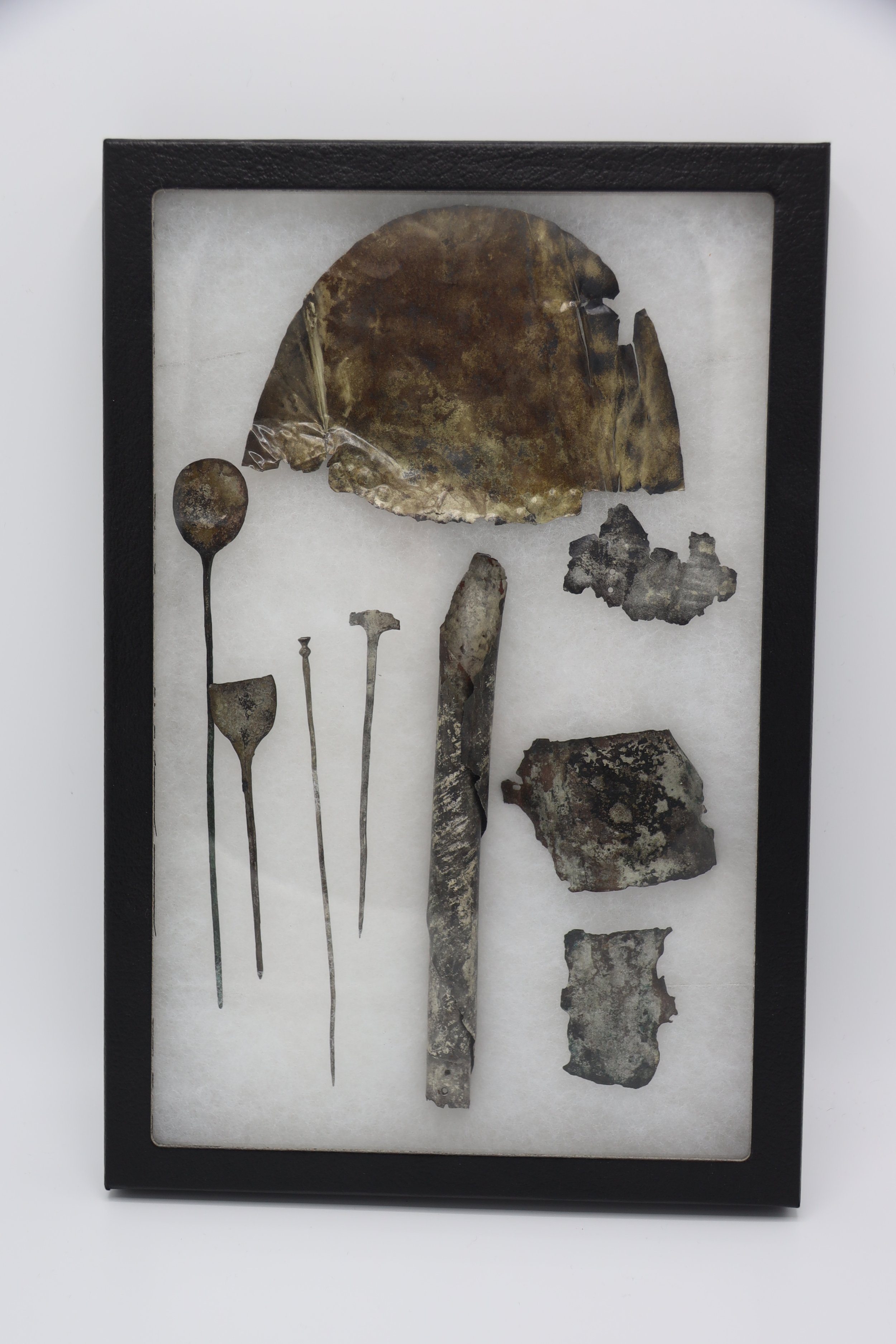
Ritual set - Silver was more prized than gold as they worshiped the moon (as well as the sun) (North Peru).
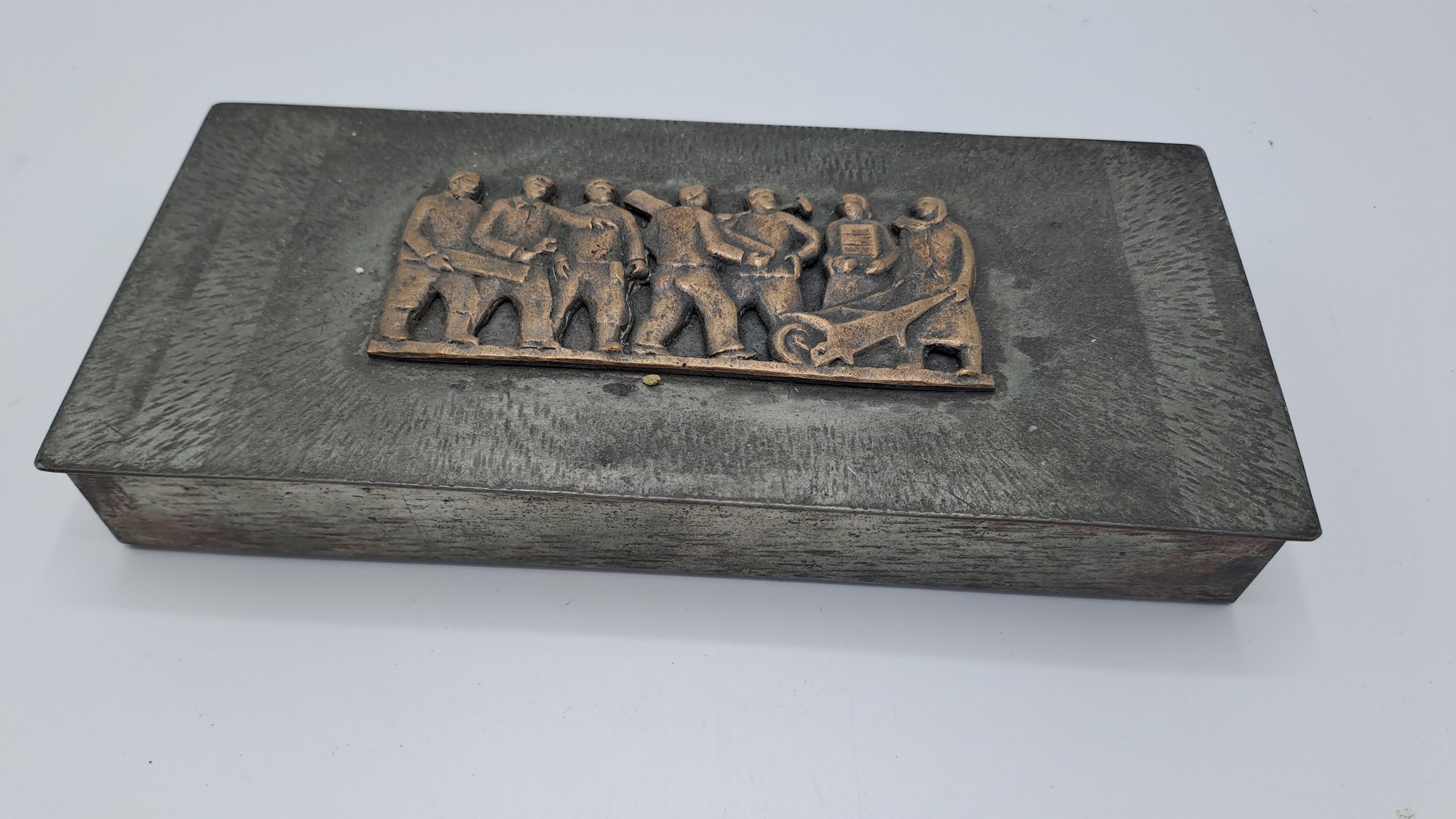
Margit Teven (Hungary 1901 - 1978) Cigarette Box - Workers Party. Typical Communist era scene of farmers and factory workers.
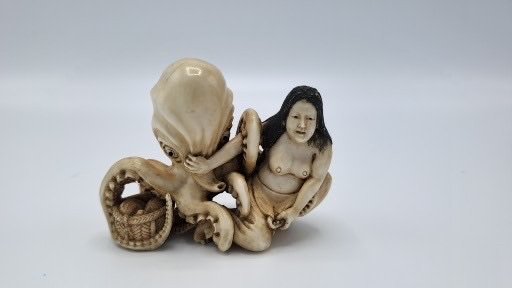
Japanese Netsuke - classic scene of Octopus (Tako) and Pearl Diver. In folklore the octopus is a physician to Ryujin, the God of the sea. It is also a phallic representation ands a common subject of erotic netsuke. Superbly carved underneath.
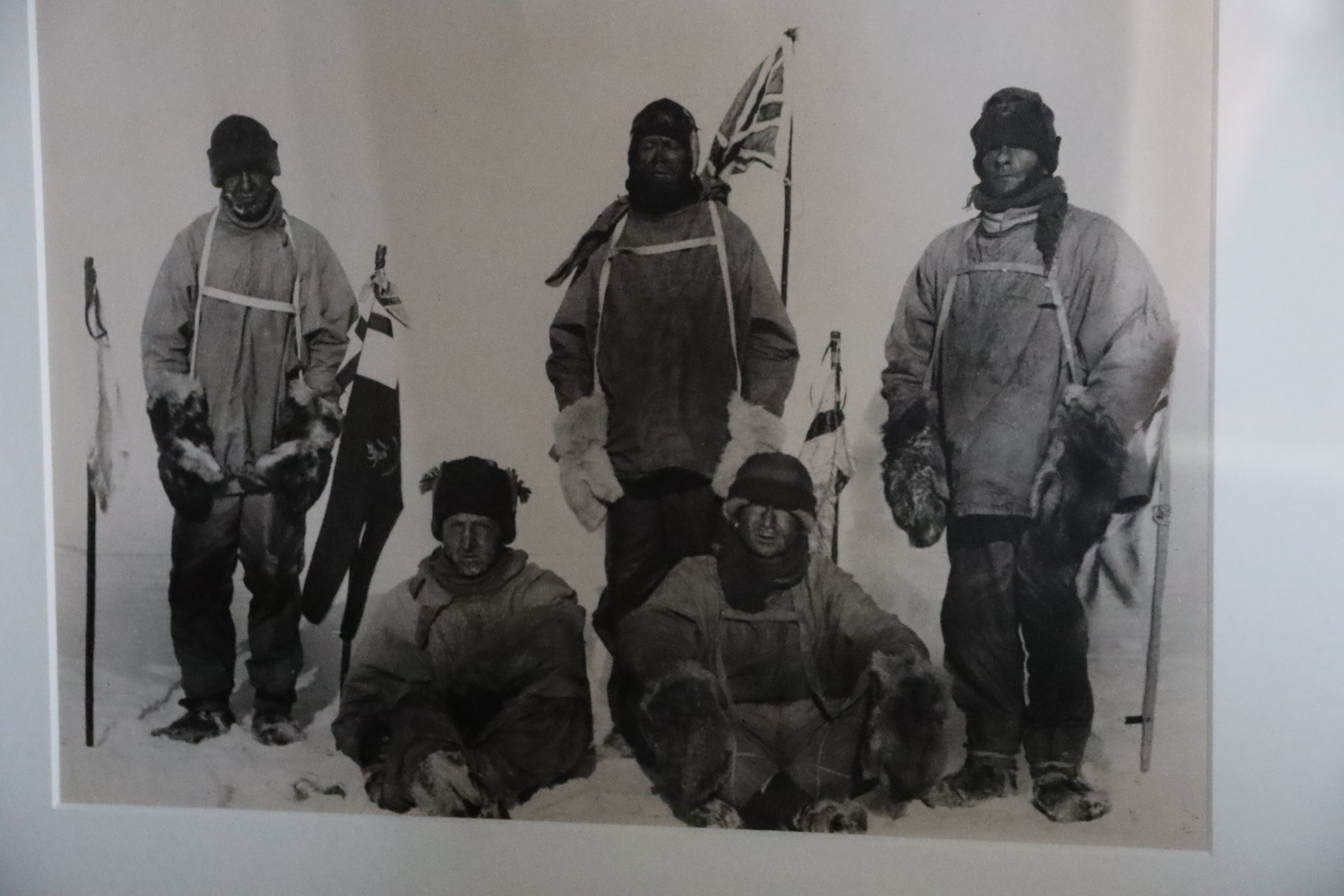
5 Men at the Pole - Scott Expedition - original old press photo. This iconic photo is probably one of the best known photos of Scott and his team in Antartica.
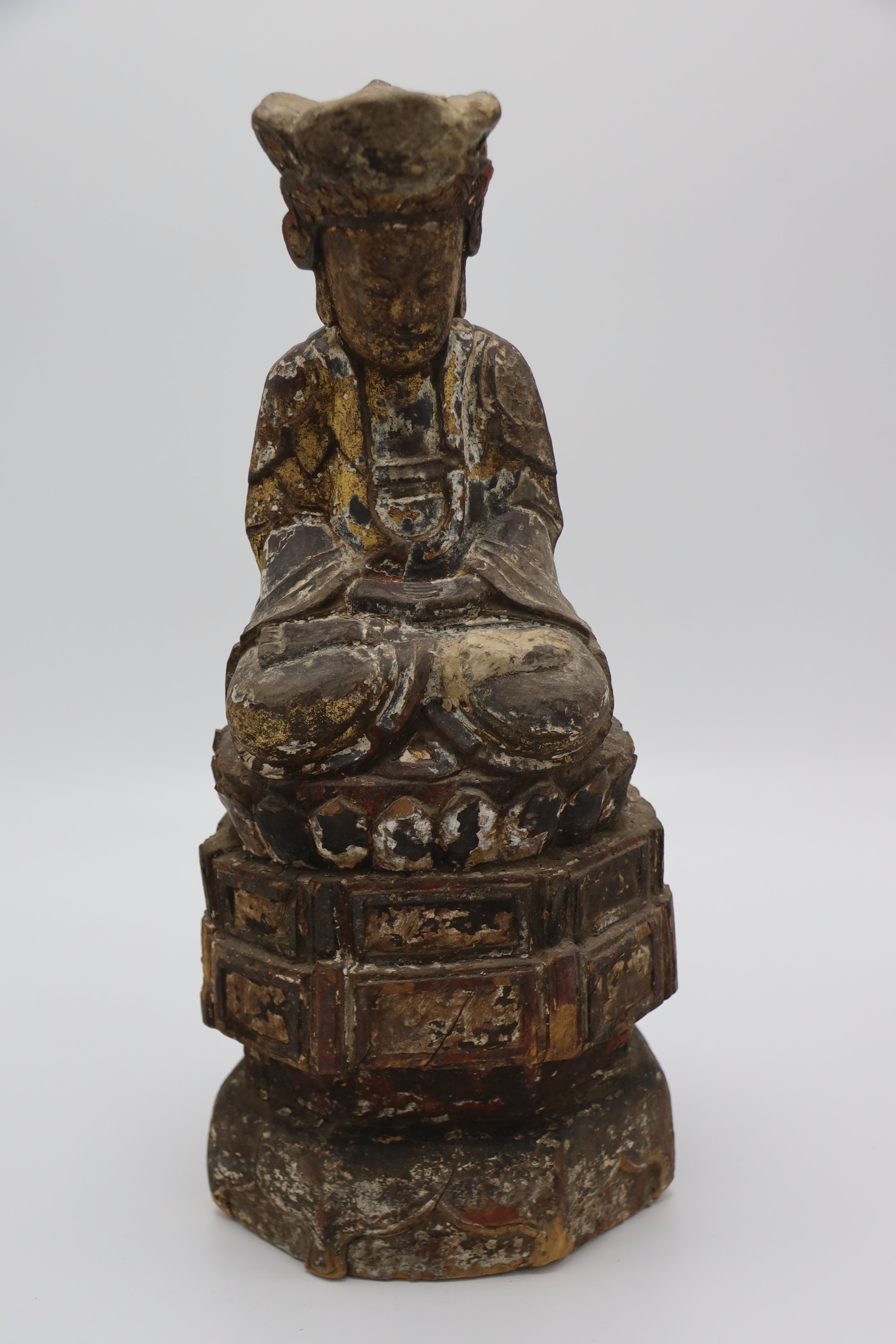
Guanyin - Goddess of Mercy c16th 1540 ad Polychromatic wooden figurine. lovely patternation and colours. (China)

Our Bellerby & Co Globe with custom ice sheets and ice bear! Made in Celebration for our 100th Country, and North Pole Marathon
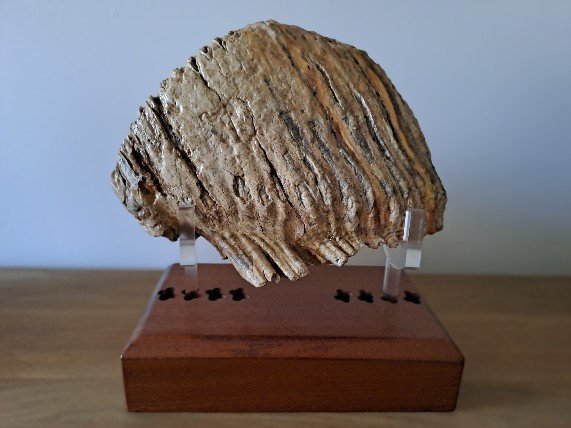
Mammoth Molar - South West England c 21000 years old!. A combination of climate change and humans killing the remaining animals ended the mammoth. Sounds familiar?
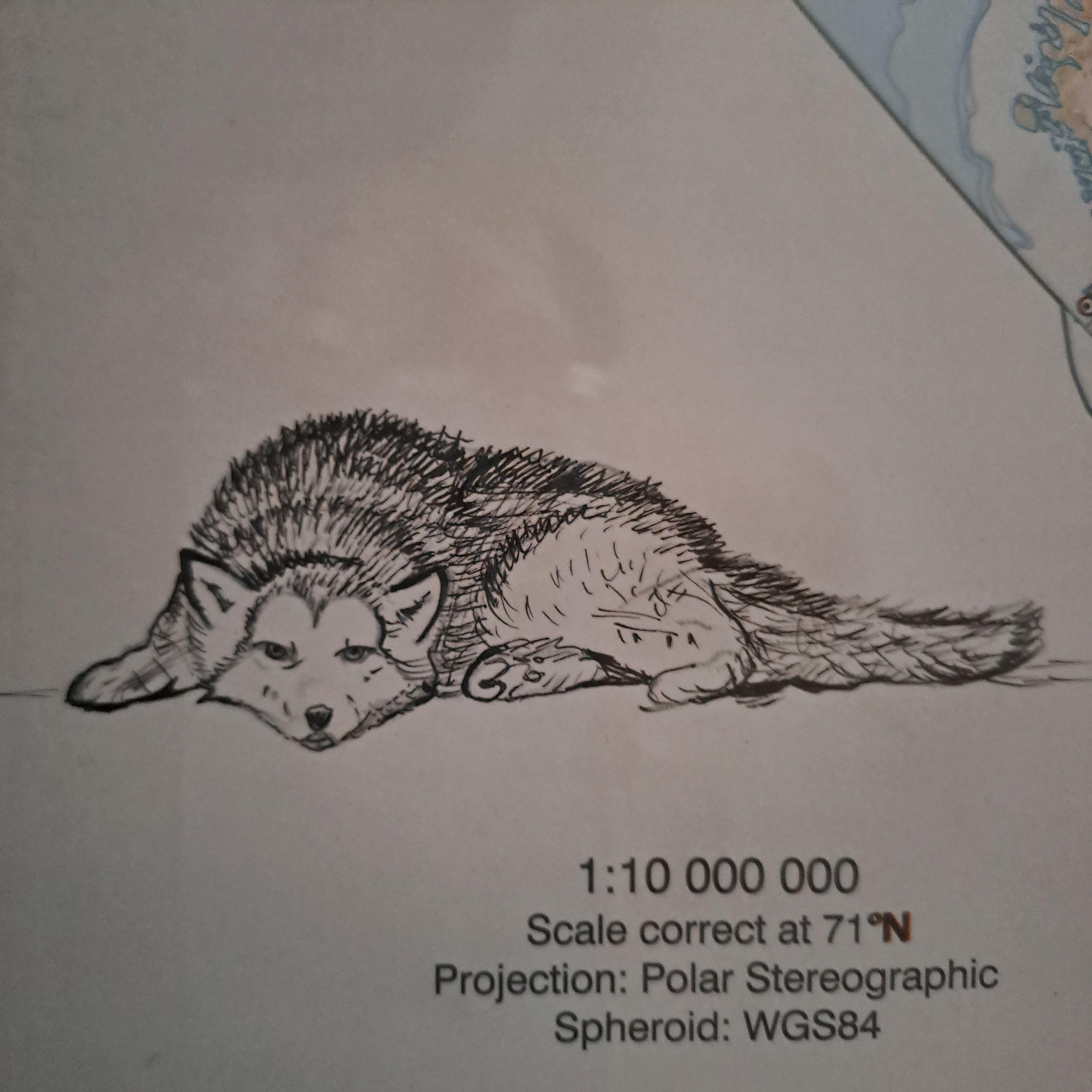
Wolf detail from North Pole Chart - by Maria Ines our wonderful talented artist from Argentina

Mayan - rare blue jade mask / pendant - pre columbian period. Mexico.
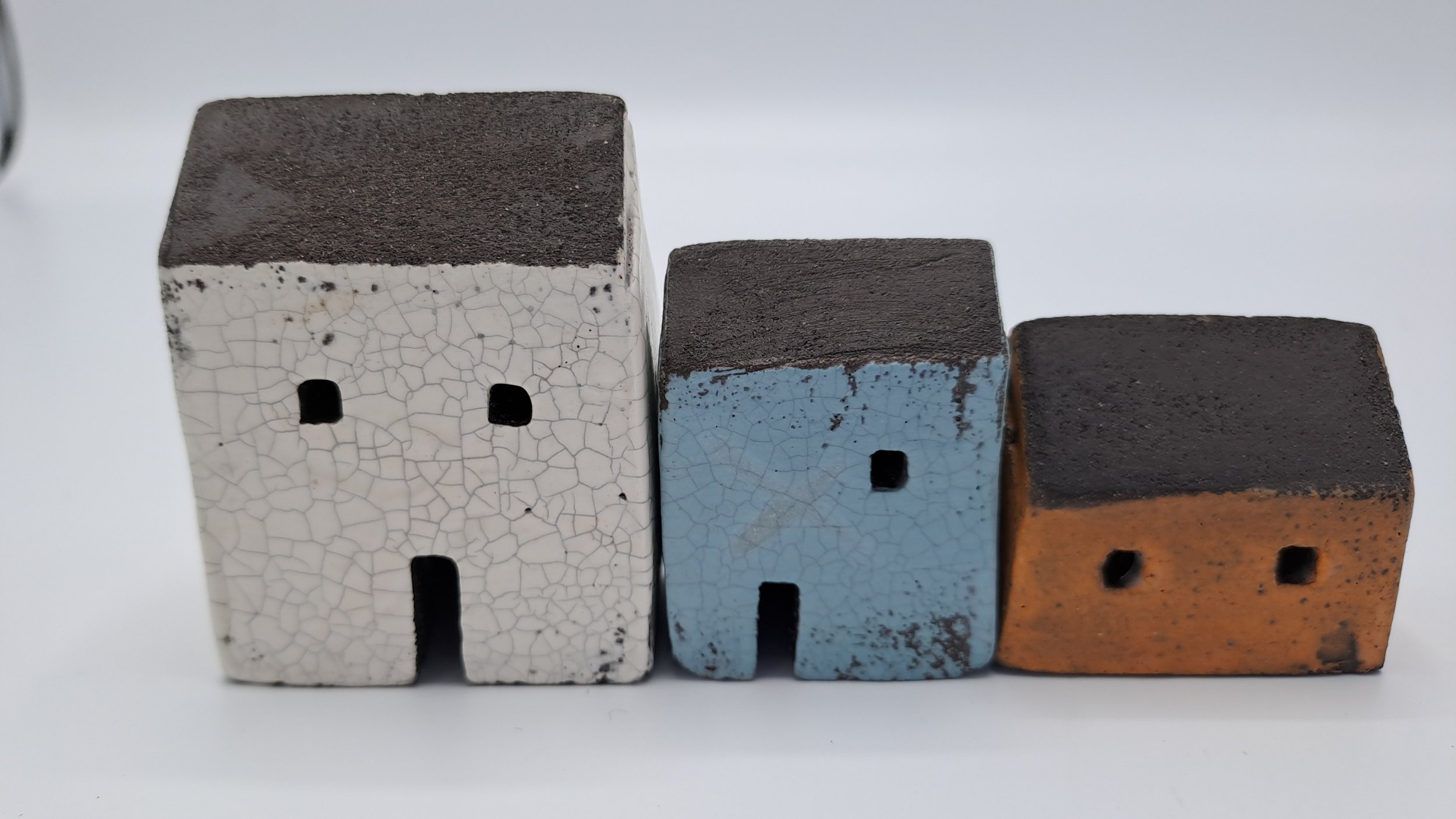
Isle of Iona - Scotland - Perfect Miniature Houses. Contemporary.

Netsuke carved nut and jade bead. Expanded Inro with ship scene, used by Samurai as a "pocket" for herbs - medicines and the like.
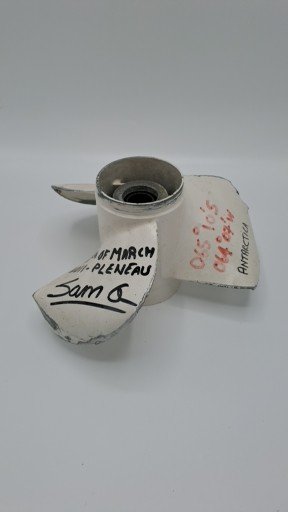
Propeller from a zodiac which we were in when we hit rocks fleeing a leopard seal attack. 065 10 S 064 07 W (Antarctica).
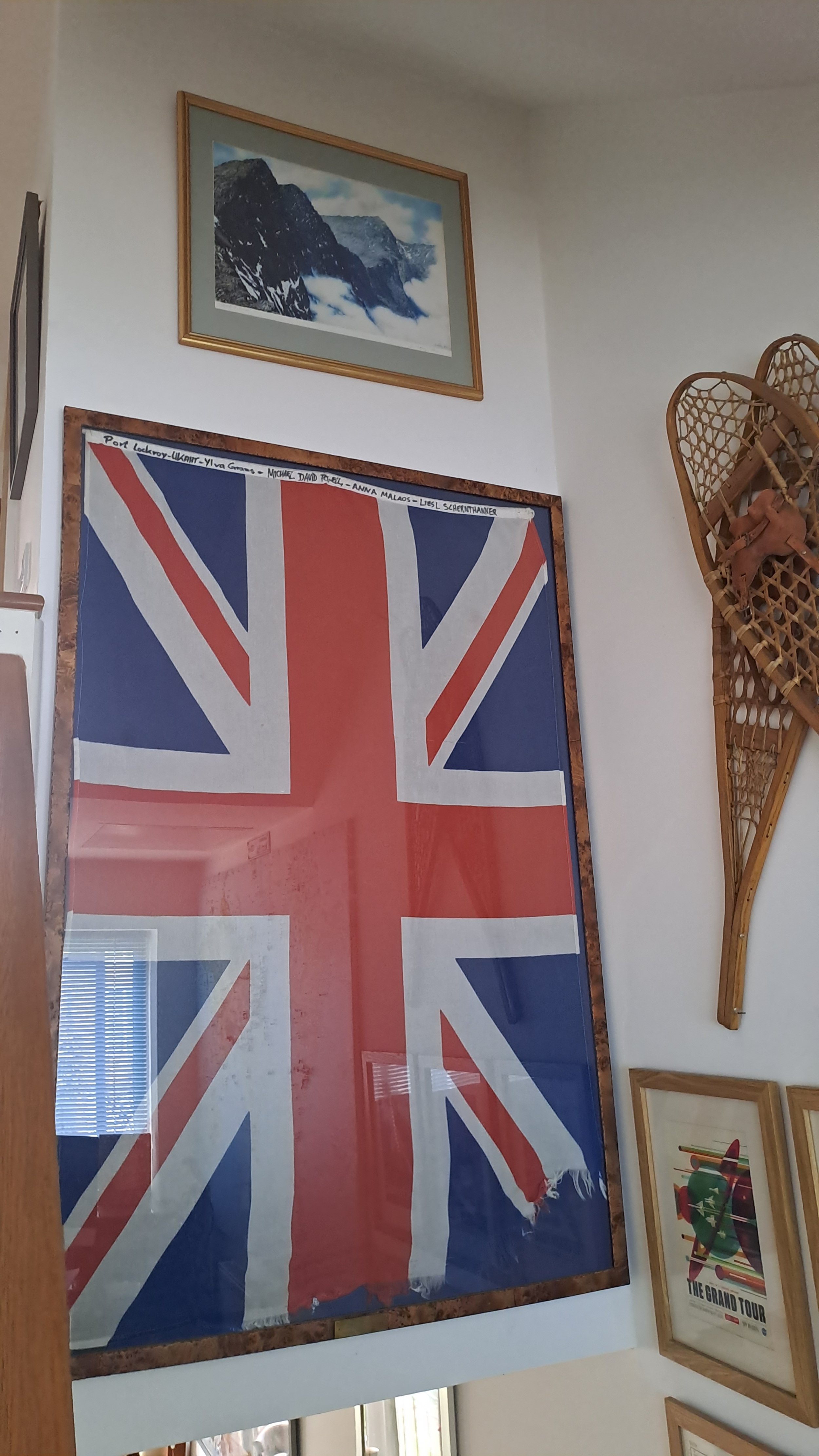
Port Lockroy Union Flag - The furthest most South post offcice in the world. Bought at the cost of saving 22 Albatrosses! (Antartica)
What else can you find at the Museum - here’s a sampler
Sports Equipment
Tech diving equipment from Custom Divers, Apex and an original Siebe Gorman Diving knife, as well as 1980’s era scuba equipment and logs.
Sailing kit by Musto and Navigation Equipment. Motorbike clothing, helmets and equipment.
Plastic climbing boots, crampons and axes from Valley de Blanche expedition. Climbing shoes, belts, quick draws and carabiners. c 19th Austrian ice axe and Canadian wooden snow shoes.
Snowblades and skiing equipment.
Models Touristware and Toys
Children’s tin and other toys from Berlin, Vietnam, Cuba, Denmark, Nicaragua, Armenia to name but a few.
Typical souvenirs from the 1970’s to date, ashtrays, commemorative mugs, tea towels and that blue stuff that was great on holiday but is awful when you get it home. You know the one!
Polar Equipment & Clothing
Polar suits by PHD, Sorrel Boots and specialist equipment. Moose hide Sami style reindeer trapping boots, designed so you slip out of your skis.
Sami knives and silver bracelets from Evens people (Russian Sami). Scrimshaw worked knives and axes from Scandinavia. Experimental and Heritage clothing.
Fur Hats, and extreme weather clothing - Canada goose jackets and much more.
Technology and Cameras
A variety of tech including GPS, Satellite Phones, and track back devices. Used at the North Pole, jungles and various locations..
Cameras through the decades - Nikon, Cannon Sony, Kodak, and Polaroid.
Watches, lap tops and all the travel paraphernalia we now cart about.
Does anyone know the WiFi Code?
Original Works of Art & Photos
Maria Ines Etchigova - Argentina - 4 hand illustrated ships charts - North East Passage - North Pole - Antartica - East Greenland
Pen and ink drawing of Svalbard and Polar Bears from Ano Grib, plus prints and original Photos.
Slovakian Artist Julia Silk -Yggdrasil - The Tree of Life and King and Queen asleep in acrylics.
Numerous silks, camel bone and other media artworks from around the globe.
Railwayana - Prints, Posters and Tube and Bus Memorabilia.
Tube maps, railway / holiday advertisements, Routemaster London Bridge bus destination sign, travel tickets, and railway signs..
Plus dozens of original modern photos of working trains around the world from the Trans Siberian Express to the Sargan 8 and Mountain Railways galore. Not forgetting photos of two locomotives at 30+ meters down on the Thistle Gorm.
The stories behind the objects
-

21st Dynasty Ushabti - The Kings Scribe - Bakenmut
The 21st Dynasty was a difficult time for Egypt and its Pharaohs, and this ushabti is quite unremarkable in that there are many others similar to it, but it is the story behind it which is intriguing. You can find the other grave goods from Bakenmut in the Berlin and British Museums, and of course this one here in The Travel Museum. It comes from the Egyptian Third Intermediate Period, lasting from 1069 BC to 945 BC, almost 3000 years ago. It is made in typical blue glazed Egyptian faience.
The Kings Scribe was an important position in the Royal Court and he would have been responsible for recording the kings thoughts as well as day to day events. He may have been privy to a lot of secret information including potentially where the Pharaohs were buried. We have long suspected that tombs were raided not just by tomb raiders , but by the Pharaohs and Priests themselves, reusing the jewels and gold. Is this true? We don’t really know but it makes for an intriguing story.
We do know that not all the jewels were made specifically for each Pharaoh and like current day Monarchs, there is evidence to support the fact that items were “reused” with Tutankhamun death mask and throne for example - reused from other dynasties, including Tutankhamuns throne which has the Arken or sun god on it.
One hypothesis is that Bakenmut and his fellow priests gathered the remaining mummy’s and pilled them into one area to try to prevent them from being desecrated even further after tomb raiders had got in. For example, Tutankhamuns mother recently identified by DNA was found in KV35 Pharaoh Amenhotep II Tomb along with several others, possible anecdotal evidence people were moved around. What do you think?
Kings incidentally were a Roman invention (Rex and Regina) so we will stick with Pharaohs. Pharaoh could be either male of female, and whilst we are on the subject if you here a pre Roman ancient briton called a King - they are not Kings but Chieftains and like Pharaohs non gender specific.
You can find Bakenmuts Ushabti and story in The Travel Museum collection.
-
The Leopard Seal incident -Propeller Antarctica
It is an odd feeling being hunted - and fortunately one which occurs very infrequently, it is normally mankind who is the hunter and destroyer. Leopard seals are amazing animals, up to 3.5 meters long and up to 600 kg in weight. They have a very varied diet from eating other seals, penguins and the ability to filter Krill like Crabeater seals. They hunt by grabbing and then smashing their prey into the water. If you look in the photo reel below you will find an odd looking tooth from the museum collection which shows how the filtration process works.
We were taking some photographs off a Zodiac in open water, when a large - and I mean large and quite aggressive leopard seal, surfaced making its usual snorting noises as it gulped in air. If you have never seen one, they have enormous heads and Leopard like canine teeth. This particular animal was evidently hungry and though we would made a nice meal? I suspect we wouldn’t eat well - too bony.
I have read accounts from early Antarctic explorers about being stalked by Leopard seals, and of the tragic death of a snorkeler who was drowned by one, and although they are aggressive they are not normally a threat to humans.
This particular animal had other ideas and soon set about trying to grab people off the boat, at one point catching a ruck sack, amongst the shrieks and screams; so we moved on quite a distance- a little shaken up, but safe in the knowledge we had left them behind. But they had other ideas and followed us - we left they caught up - a game of cat and mouse. Finally frustrated at not being able to catch dinner, they launched an attack on the boat - repeatedly biting it.
That was it it - time to retreat for good, and in our haste to do so we hit uncharted rocks being the propeller - which fortunately held up long enough for us to get back to the “mother ship” MV Explorer.
Was it really hunting us - or just being territorial, maybe defending young? Orcas are the only predator - other than man of leopard seals so maybe they saw it as a solitary Orca and fancied its chances. Having read Antarctic explorer accounts the behaviour ties in with their stories of stalking and grabbing. I think it is important to remember that we are on their patch - we are the intruders, and ultimately the unharmed Leopard seal had the last laugh as we limped back home.
You can find the propeller in The Travel Museum Collection
-

Port Lockroy Union Flag
It’s behind glass because quite honestly it smells bad. Really bad. Months of penguin poo permeating into the fabric does not make a pleasant smell. The Union flag flys at the post office and huts in Antartica - one of the last outposts of Britain, also claimed by Chile and Argentina.
It was bought at a charity auction in Antartica to raise money for the plight of the albatross many of whom are dying as a result of long lining - a form of fishing using long lines, they die going after the bait and end up what is termed - bye catch - eg things you didn’t want. It is very easy to solve using hook pods to stop the birds getting the hook and just $10 USD will hopefully save one of these magnificent, graceful and endangered birds. We helped to “save” 22. - over to you.
This flag flew in the 2011 season and is battered and faded from the harsh Antartica weather, signed by the crew of the station, it makes a fitting tribute to one of the last pristine wildernesses on the planet and of course our precious albatrosses.
Antartica is a vast continent and in size it is the fifth-largest continent, being about 40% larger than Europe. It has an area of 14,200,000 km2 and if were a country it would be the 2nd biggest in the world after Russia.
When we visited the station at Port Lockroy we posted some cards in the post box here, but they didn’t turn up. Then 6 months later they arrived - We were one of the last ships in for the season and they must have forgotten to empty the. box - still better late than never.
Anyone seen our basecamp Everest ones?
The huts themselves are really interesting, with old tins and brands that if you are of a certain age you would recognise instantly..
You can find the Union Flag* from Port Lockroy in The Travel Museum Collection.
*It is only the Union Jack when it is on the Jack Pole, otherwise it is the Union Flag.,
